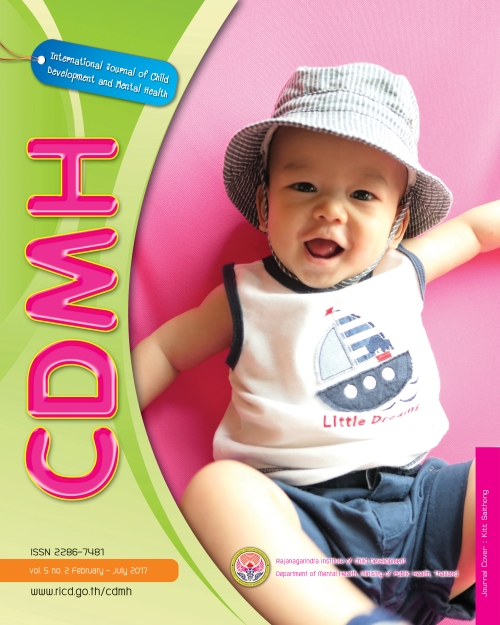Motor Function and Manual Ability in Children with Cerebral Palsy: A Primary Report
Main Article Content
Abstract
Abstract
This descriptive study aims to describe the
motor type, topographical distribution and motor
function of lower limbs, and the manual ability of
upper limbs. Cerebral Palsy (CP) describes a group
of disorders in the development of movement and
posture in the developing brain. This study was
carried out during 2015 on 60 CP children. Multiple
sources of assessment were used, including medical
records of patients at the Physical Medicine
Department in 550 Bedded Mandalay Children’s
Hospital. Children were grouped according to
motor type, topographical pattern, Gross Motor
Function Classification System (GMFCS) and Manual
Ability Classification System (MACS) scales. During
the study period, 60 CP children (29 males and
31 females) aged 4-12 years were observed, with
a mean (SD) age of 7.7 (3.7) years. In this study,
spastic CP was the most common type (80%) and
more specifically, bilateral CP (70%) was more
common than unilateral (10%). With respect to
the GMFCS classification, level II (30%), and to
the MACS classification, level II (38.3%), was the
most common. This study is only a hospital based,
descriptive study and therefore there are many
limitations. We are trying to establish a neuro-clinic,
as well as a development clinic, with few resources
and man power. This research team is in the
first few steps of developing a coordinated,
multidisciplinary team to help children with
cerebral palsy and developmental delay. The
significance of the study results will help to
educate the community about the role of early
intervention, the earlier the better, for children
with cerebral palsy.
Article Details
![]()
Creative Commons License
This work is licensed under a Creative Commons Attribution-NonCommercial-No Derivatives 4.0 International (CC BY-NC-ND 4.0)
The authors retain copyright and permit the journal the copyright of first publication
Articles, once having passed the review process and accepted for publication in the CDMH Journal, are copyrighted under the CDMH Journal, Department of Mental Health, Ministry of Public Health. Please be aware distribution of CDMH Journal content for commercial purposes without permission is expressly prohibited. However, distribution with intent to educate, advocate, or spread awareness within the general public and research communities is permitted and encouraged with the understanding that the CDMH Journal Editorial Board do not hold jurisdiction or liability for any accompanying comments, text, or information from third parties, either in favor for or against the original article’s assertions, conclusions, methodology, or content.


